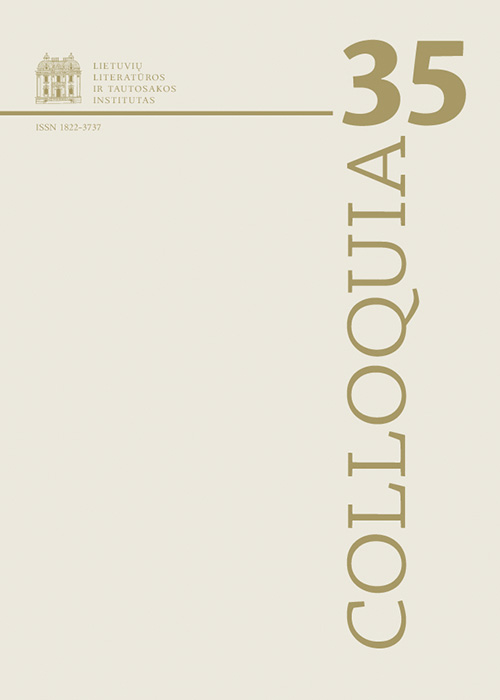Sambūrių atmosfera: „Šatrijos“ ir „Trečio fronto“ bendrijos kultūrinės psichologijos aspektu
Santrauka
Interpretuojant daugelį prieštaringų XX a. lietuvių kultūros istorijos epizodų, vis dažniau formuluojamas poreikis ne vien aiškintis politinius procesus, idėjinius kontekstus, bet ir suprasti to meto asmenybių ir bendrijų kultūrinę psichologiją. Taip siekiama eiti integralesnio istorinių asmens situacijų ir motyvacijų supratimo keliu. Šiame straipsnyje keliamas uždavinys rekonstruoti ir palyginti dviejų literatūrinių sambūrių – neokatalikiškos „Šatrijos“ draugijos ir kairiojo „Trečio fronto“ – psichokultūrines atmosferas 3 ir 4 XX a. dešimtmečių sandūroje. Atmosferos sąvoka, sekant kultūrinės psichologijos nuostatomis, vartojama intencinio pasaulio, jungiančio objektyvią istorinę aplinką, simbolines reikšmes ir subjektyvias intencijas, prasme. Remiantis Jerome’o Brunerio, Richardo Schwederio, Michaelo Cole’o, Vytauto Kavolio darbais, straipsnyje išryškinami keli kultūrinei psichologijai būdingi analizės aspektai – santykis su autoritetais, institucine aplinka, kolektyvinio bendravimo erdvės ir praktikos, privačių žmogiškųjų ryšių specifika. Pagal juos analizuojama gausi šių sambūrių dalyvių bei artimų jiems asmenų atsiminimų medžiaga. Tyrimas leidžia aiškiau identifikuoti tarp anuometinio jaunimo susikūrusias liberalią saloninę ir revoliucinę bohemišką terpes, abiem atvejais opoziciškas kanoninėms struktūroms, ir suvokti, kad abiejų dalyviai 4-o dešimtmečio pradžioje susidūrė su jų represavimo mechanizmais. Tačiau kaip tik tokiose krizinėse situacijose iškyla lemiamas asmens vidinio pasaulio ir savosios kultūros vertybių (ne vien kanoninių) ryšys ir išryškėja skirtingų psichokultūrinių elgsenų bruožai.
Atsisiuntimai
Skaitomiausi šio autoriaus(ų) straipsniai
- Mindaugas Kvietkauskas, Nuo Šulhoifo iki Monparnaso: kultūrinis koliažas Moišės Vorobeičiko fotoknygoje Vilniaus žydų gatvė (1931) , Colloquia: T 48 (2021)
